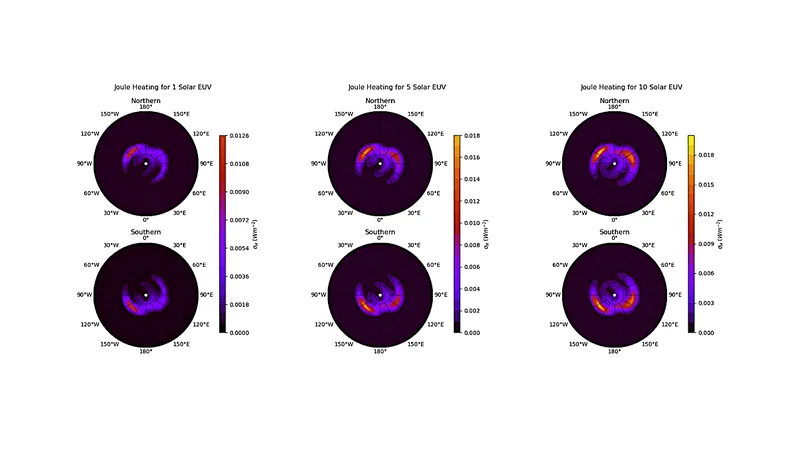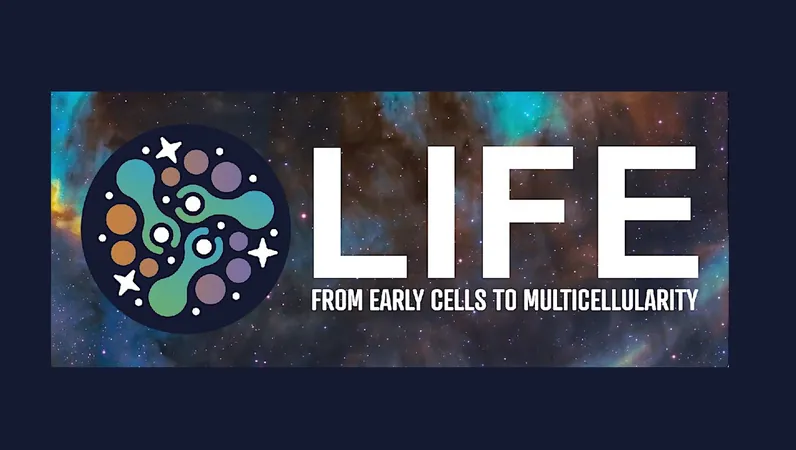
Revolutionary Insights: How Enhanced EUV Flux Shapes the Atmospheres of Earth-Like Exoplanets
2025-09-02
Author: Wei Ling
The Quest for Earth-Like Planets: A Cosmic Challenge
Astronomers are on an exhilarating journey to discover Earth-like planets beyond our solar system. A pivotal question remains: do these distant worlds possess atmospheres? And, crucially, can they retain them against the harsh cosmic conditions they face?
Unraveling the Mystery of Atmospheric Stability
In a groundbreaking study, researchers harnessed the power of the Global Ionosphere and Thermosphere Model (GITM) to simulate the effects of enhanced Extreme Ultraviolet (EUV) flux on the atmospheric dynamics of Earth-like exoplanets. By examining variations in EUV flux, which refers to high-energy radiation emitted by stars, they aimed to unveil the upper atmospheric behavior of these distant planets.
Significant Findings: Elevated Ionospheres and Atmospheric Escape
The team set a baseline based on the EUV flux experienced by Earth and then explored scenarios where this flux was intensified up to 50 times greater. Their results revealed a dramatic inflation of the ionosphere in response to increased EUV levels, highlighting striking changes in heating and cooling processes within the atmosphere. This comprehensive analysis demonstrated how conductivity fluctuated with varying EUV flux intensities.
The Impact of One-Dimensional vs. Three-Dimensional Models
Notably, the researchers discovered that relying on one-dimensional atmospheric models limits the understanding of complex global atmospheric behaviors. Their findings suggested a pivotal threshold; when EUV flux surpasses 10 times the baseline, it leads to rapid atmospheric escape. For exoplanets orbiting their stars more closely—around 0.3 AU from a sun-like star—this translates to a precarious atmospheric fate.
Conclusion: A Grim Outlook for Close-In Exoplanets
The implications are clear: Earth-like exoplanets in close orbits risk losing their atmospheres rapidly due to heightened EUV flux. These revelations not only advance our understanding of exoplanetary atmospheres but also refine our criteria in the search for potentially habitable worlds. As we gaze into the vastness of space, the pursuit of planets that mirror our own becomes ever more complex and fascinating.



 Brasil (PT)
Brasil (PT)
 Canada (EN)
Canada (EN)
 Chile (ES)
Chile (ES)
 Česko (CS)
Česko (CS)
 대한민국 (KO)
대한민국 (KO)
 España (ES)
España (ES)
 France (FR)
France (FR)
 Hong Kong (EN)
Hong Kong (EN)
 Italia (IT)
Italia (IT)
 日本 (JA)
日本 (JA)
 Magyarország (HU)
Magyarország (HU)
 Norge (NO)
Norge (NO)
 Polska (PL)
Polska (PL)
 Schweiz (DE)
Schweiz (DE)
 Singapore (EN)
Singapore (EN)
 Sverige (SV)
Sverige (SV)
 Suomi (FI)
Suomi (FI)
 Türkiye (TR)
Türkiye (TR)
 الإمارات العربية المتحدة (AR)
الإمارات العربية المتحدة (AR)